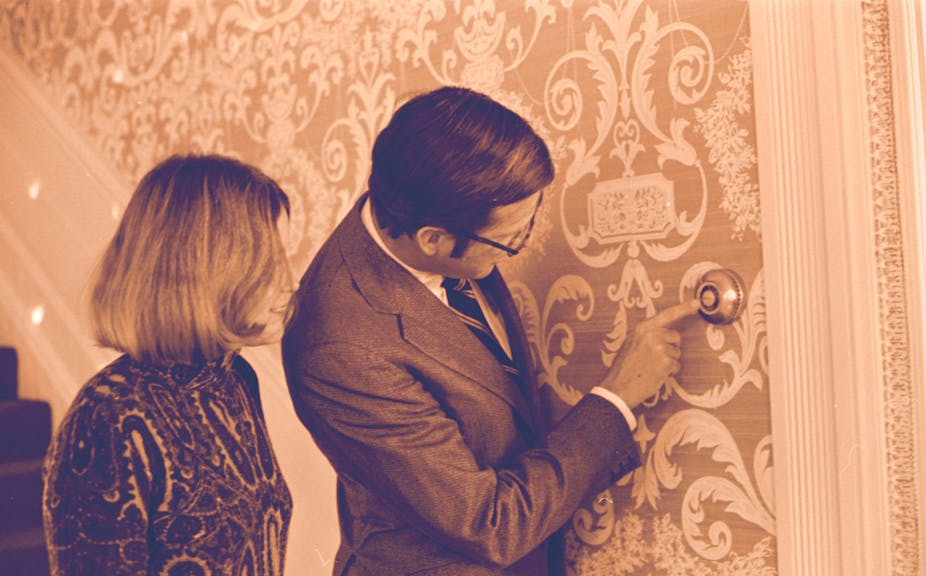Since last year’s autumn statement, the electoral stars have seemed to align in the Conservative Party’s favour: inflation has remained low, unemployment has continued to fall, the economy has grown, and people’s sense of economic optimism – so often the driver of government support in the past – has risen. Ed Miliband’s personal ratings fell sharply after a series of gaffes while David Cameron’s ratings rose. All has seemed set fair for a Conservative surge.
Yet despite these portents of electoral recovery and eventual victory, support for the Conservatives in the polls has risen slowly and fitfully. Even now, Labour and the Conservatives remain neck-and-neck in the polls.
Not-so-austerity Britain
The chancellor of the exchequer, George Osborne, has presented the image of a Britain that is “paying its way” and “walking tall again”. But beneath the bravado, one can hear the crashing of gears. Since the autumn statement, Osborne has significantly revised his programme of austerity.
In 2014, he set a goal of generating a surplus of £23 billion by 2019/20, and indicated that the programme of cuts would continue to 2019/20. He also announced his intention to reduce overall government spending to 35% of GDP.
Now, Osborne has shifted the goalposts, predicting a surplus of £7 billion by 2019/20. He also declared that the cuts would finish a year earlier in 2018/19. Overall government spending as a proportion of national income would return to 1964 levels. The significance of these revisions should not be overstated. Austerity has been reduced, not eliminated. Nevertheless, the revisions are politically important and prudent.
There are several reasons why Osborne revised his estimates. Part of it has to do with image: Cameron’s “de-toxification” of the Tory brand is still incomplete. Senior Conservatives are well aware that – in the eyes of many voters – they remain the “nasty party”.
Another reason is that Labour has been on the attack, conjuring images of a cash-starved NHS, and a return to levels of government spending not seen since the 1930s. This depiction was lent credibility, after the Institute for Fiscal Studies warned of “massive” cuts to come, and Vince Cable unhelpfully commented that the proposed cuts would be “brutal”.
The policy mood
Yet the real reason for Osborne’s revisions is all too easily overlooked: it is simply that the electorate remains committed to the public services. And, what is more, it has moved significantly to the left since 2010.

This leftward movement is summarised by the graph above, which displays the annual average left-right position of the electorate – in other words, the “policy mood” – since 1964. It is estimated using responses to hundreds of policy questions – relating to tax, spending, welfare, Europe and so on – that are asked in different years. These 5,300 responses are standardised and averaged using an algorithm devised by Professor James Stimson of the University of North Carolina.
Thermostats and the policy mood
The research suggests that the mood has generally moved in the opposite direction to policy: down to the right from 1964 to 1979, up to the left from 1979 to 1997 and down to the right again between 1997 and 2010. By 2014 the electorate had moved left again, returning to approximately where it was in 2005 – the year of Labour’s third successive victory.
This pattern of response – first identified by Professor Chris Wlezien of the University of Texas at Austin – suggests the policy mood is like a “thermostat”. When it gets too cold (unemployment and inequality increase) it signals the need to turn up the heat (spend more). And when things get too warm (spending and taxes rise) it signals the need to turn the heat down (spend less).
Back to the future
The evolution of preferences provides a fascinating perspective on recent history. But it also tells us something about contemporary politics too. Although the mood in 2014 was at roughly the same level as in 2005, Labour is in a weaker position in the polls.
Labour’s less favourable standing may be because the party is perceived as being either further left, or less competent, than it was in 2005 – a legacy of the financial crisis of 2008. Alternatively, it may be because the Conservatives are further to the centre or more competent. Whatever it is, it is not because the electorate is more “right-wing” than in 2010 – the mood has demonstrably shifted left.
These findings should give Labour both heart and a warning: heart because they won in 2005. And a warning because, even in these more favourable circumstances, they received only 36% of the vote.
The final lesson is a more long-term one. If the Conservatives do go on to form the next government and continue with their programme of austerity and tax cuts, the electorate will continue moving left. The thermostat will signal a need to turn up the heat. This movement will contribute to the Tories’ eventual defeat.
If Labour forms the next government and prioritises spending, the electorate will move right. The thermostat will signal the need to cool things down. As I have discussed before, governments usually lose votes from one election to the next – the British public’s policy mood swings are undoubtedly a factor in this.

